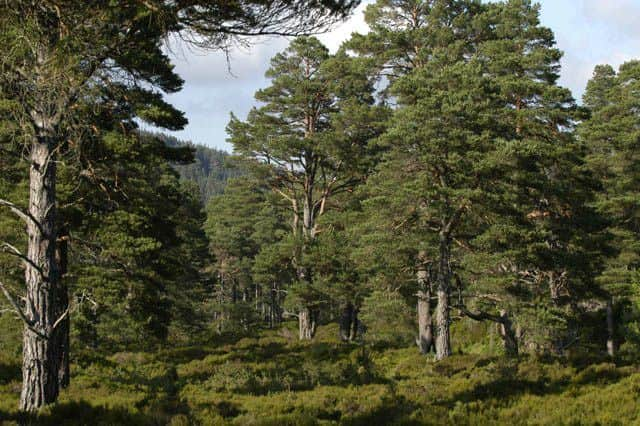Bid to conserve Caledonian Forest '˜at risk of failing'


These forest fragments are characterised by the dominance of Scots pine and are a unique feature of the Scottish Highlands.
They are categorised as a Priority Habitat under the EU Habitats and Species Directive with 10 of the remaining areas designated Special Areas of Conservation by Scottish Natural Heritage.
Advertisement
Hide AdAdvertisement
Hide AdHowever, a team led by Professor Brian Huntley of Durham University found that the present climate is more suitable for oak trees than the Scots pine.
Using a computer modelling approach researchers showed that there is an imbalance between the present warmer climate and the dominance of Scots pine in these forest fragments, with the present climate more favourable for the growth of oak trees at these sites.
If the present forests were to be disturbed or destroyed, perhaps as a result of fire or an outbreak of a pathogen such as the Dothistroma needle blight, they would be replaced by oak woodlands, the researchers found.
Professor Huntley, in Durham University’s Department of Biosciences, said: “The climatic debt will be repaid when the pines forming the present forest canopy die or are killed, when oaks and other trees better adapted to the climatic conditions now prevailing will replace them.
“Such an outcome is inevitable; the only question is how soon it will come about, and that is mainly a matter of chance, and hence unpredictable. A forest fire could happen this year, or may not occur for decades.
“Pathogen outbreaks are similarly unpredictable, as past experience with Dutch elm disease and the recent outbreak of ash dieback disease have shown.”
Advertisement
Hide AdAdvertisement
Hide AdScots pine trees came to dominate these forests under the cooler conditions that pre-dated the Industrial Revolution, with many established more than 200 years ago.
Once established, the Scots pine was able to hold off the threat from other trees, such as the oak, which are better adapted to warmer conditions.
As humans rapidly added carbon dioxide to the atmosphere through industrialisation, the annual mean temperature in the Scottish Highlands has increased by about 0.7C since 1800, with larger increases during the winter months.
According to the researchers this means a “climatic debt” has been accumulated - which means that if the Scots pines die or are destroyed, they will be replaced by oak trees more suited to today’s higher temperatures.
The research team also included colleagues from the universities of Exeter, York and Lund in Sweden, with the findings published in the journal Conservation Letters.
The researchers said that their findings have implications for the future conservation of Caledonian pinewoods, and their associated species such as the endemic Scottish crossbill.
Advertisement
Hide AdAdvertisement
Hide AdThey recommend that sites that are now, and will be in future, more favourable for the growth of Scots pine than for oaks need to be identified and conserved.
The results of the study also have more general global significance as many ecosystems globally are likely to have accumulated similar climatic debts to those of the remaining Caledonian pinewood fragments.
The research was funded by the Natural Environment Research Council (NERC).